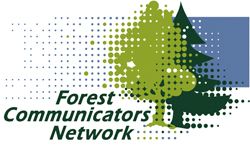

MEDIA RELEASE – PDF for download
Freiburg, Germany, 20 September 2017 – Facts are vital tools for communicators striving to help the public understand critical issues such as climate change and the forest sector, according to a session on communication during the 125th Anniversary Congress of the International Union of Forest Research Organizations (IUFRO). Read more…

PDF for download
 INTERVIEW with keynote speaker Dr. Arun Agrawal,
INTERVIEW with keynote speaker Dr. Arun Agrawal,
University of Michigan, USA
Keynote Plenary Session 2
Friday, 22 September, 10:30 – 12:00
Rolf Böhme Saal (Konzerthaus Freiburg)
“The perverse outcomes of incentives for forest conservation”
Read more…

PDF for download
 INTERVIEW with keynote speaker Dr. Hojka Kraigher,
INTERVIEW with keynote speaker Dr. Hojka Kraigher,
Slovenian Forestry Institute, SLOVENIA
Keynote Plenary Session 2
Friday, 22 September, 10:30 – 12:00
Rolf Böhme Saal (Konzerthaus Freiburg)
“Hidden biodiversity and forest dynamics”
Read more…

PDF for download
 INTERVIEW with keynote speaker Dr. Will Steffen,
INTERVIEW with keynote speaker Dr. Will Steffen,
The Australian National University and the Stockholm Resilience Centre, AUSTRALIA
Keynote Plenary Session 1
Thursday, 21 September, 10:30 – 12:00
Rolf Böhme Saal (Konzerthaus Freiburg)
The Earth System, the Anthropocene and the World’s Forests
Read more…

Photo: Promode Kant
A IUFRO-SPDC training program on “Science-Society Interactions in Support of Forest Landscape Restoration Implementation” was held at the University of Freiburg as a pre-Congress event from Sept 16 to 18, 2017. Global initiatives like the Bonn Challenge and the New York Declaration on Forests have set a huge target of 350 million hectare of forest and landscape restoration by 2030 before the global community and there has been some progress in the financing of this task, too. But still a lot of effort is needed to prepare the governments and societies at different levels across the world for them to be able to move towards the target efficiently with lower social and economic costs and with minimum distress to the poorer communities. This workshop discussed ways and means of transforming scientific knowledge into useful information for policy and management decisions on the ground. More specifically, the workshop aimed at the following specific objectives: Read more…

SPDC Communicating Forest Science participants gather during a short break between sessions.
When is the last time you saw a tweet about your research? How much time have you spent crafting key messages about your science?
Communicating takes time and effort and that is what eight delegates from seven countries just learned. They gathered to improve their ability to communicate forest science, representing fields ranging from forest products and entomology to climate change adaptation and local community forest management. The delegates worked hard over two days with one goal in mind: communicating their research with a purpose. Read more…

PDF for download
 INTERVIEW with keynote speaker Dr. Robin Chazdon,
INTERVIEW with keynote speaker Dr. Robin Chazdon,
University of Connecticut, USA
Keynote Plenary Session 2
Friday, 22 September, 10:30 – 12:00
Rolf Böhme Saal (Konzerthaus Freiburg)
“Restoration Forestry: Challenges and Opportunities for Foresters, Forests, and Landscapes”
Read more…

PDF for download
 INTERVIEW with keynote speaker Dr. Werner Kurz,
INTERVIEW with keynote speaker Dr. Werner Kurz,
Canadian Forest Service (Natural Resources Canada), Canada
Keynote Plenary Session 1
Thursday, 21 September, 10:30 – 12:00,
Rolf Böhme Saal (Konzerthaus Freiburg)
“The potential contribution of the forest sector to climate change mitigation”
Read more…
PDF for download

Wood chips being transported to a pulp mill. These chips represent the waste stream from a saw mill, but are becoming increasingly valuable as more and more uses for wood are developed. Photo by John Innes.
“The portfolio of goods and services from forests is now very different to that two decades ago; yet there is a disconnect between the institutional framework and these new forms of forest use, leading to efficiency, equity and legitimacy deficits,” said Dr. John Innes, Dean of the Faculty of Forestry at the University of British Columbia, Canada.
The changes – from forest planting and forest harvesting and operations, to forest use and forest products – occur at different levels. Today, forests produce a complex array of products from forest ecosystem services to timber and bio-products.
Market values are increasingly being attached to forest ecosystem services and this is changing the value systems associated with forestry. Read more…
PDF for download
To some, the forests mean combatting illegal logging and associated trade, avoiding deforestation and degradation, conserving biodiversity and protecting wilderness.

Photo by Geoff Roberts, Australia
To others, the forests mean timber as a renewable raw material for uses such as construction and bioenergy, forest-based climate change adaptation and mitigation and transitioning toward a forest-based bioeconomy.
“These issues can be termed the global forest environmental frontier,” said Dr. Georg Winkel, Head of the European Forest Institute’s Resilience Research Programme in Bonn, Germany.
“All the issues are interrelated and relate to a global controversy that asks how we can keep and manage the world’s forests to satisfy both ecological and socio-economic needs now and in the future,” he said.
Dr. Winkel is coordinator of a session entitled The Global Forest Environmental Frontier – What has changed, what has remained unchanged, how will the future look? at the IUFRO 125th Anniversary Congress in Freiburg, Germany in September. Read more…




 INTERVIEW with keynote speaker Dr. Arun Agrawal,
INTERVIEW with keynote speaker Dr. Arun Agrawal, INTERVIEW with keynote speaker Dr. Hojka Kraigher,
INTERVIEW with keynote speaker Dr. Hojka Kraigher, INTERVIEW with keynote speaker Dr. Will Steffen,
INTERVIEW with keynote speaker Dr. Will Steffen,

 INTERVIEW with keynote speaker Dr. Robin Chazdon,
INTERVIEW with keynote speaker Dr. Robin Chazdon, INTERVIEW with keynote speaker Dr. Werner Kurz,
INTERVIEW with keynote speaker Dr. Werner Kurz,
